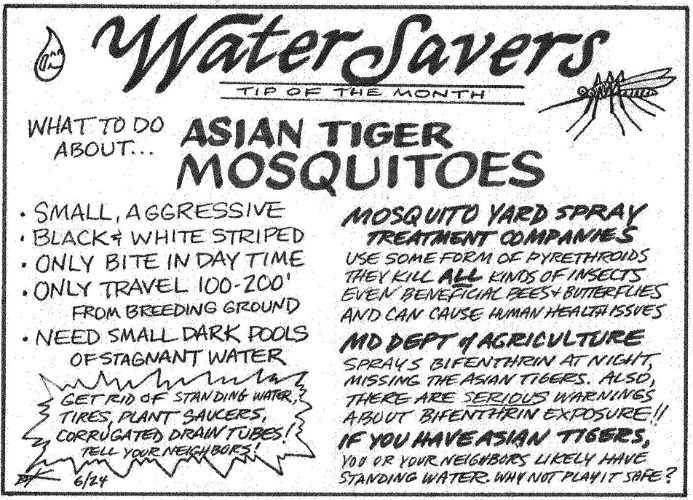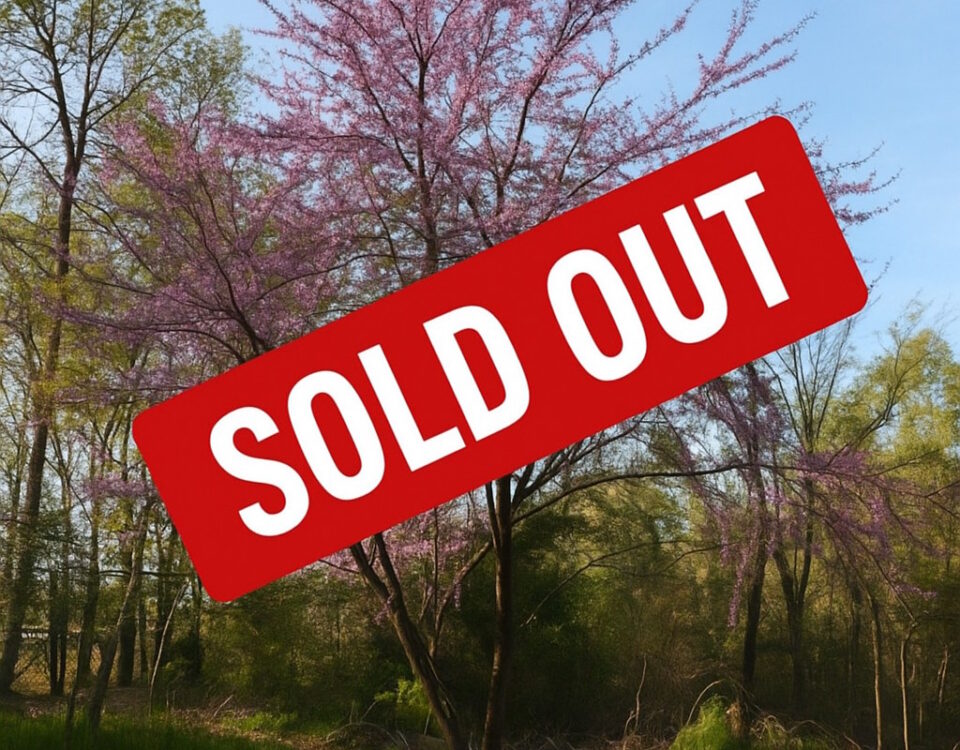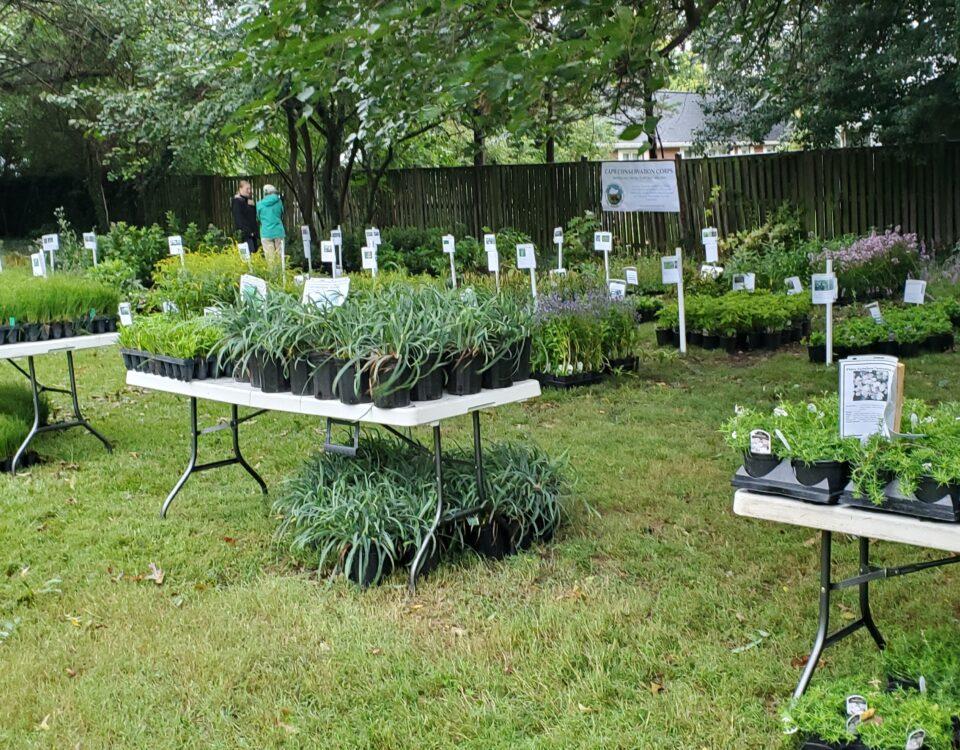
Habitat Hero – June 2019
June 6, 2019Our Native Plant Sale & Fest: Fall is the Time to Plant
August 9, 2019By: Stacey Wildberger
For many years I typically chose plants for the garden because they were pretty, they caught my eye or smelled good. These days, about 5 years now, I have begun to think more about what can the plant offer to the local fauna? What is its role in the ecosystem? Is it a host plant for a butterfly’s caterpillar? Is it providing a spot for an insect to overnight or tuck its babies in safely? Does it perform a function in the ecosystem? I have begun to re-think pretty and have quiet compassion for the ones who have no voice.

I am beginning to see the many rewards for the change in my way of thinking. Every evening when I go out into the yard I look around at every leaf, stem and bloom, I am searching for signs of life. A caterpillar feasting on its favorite host plant, a solitary bee placing her babies in the hollow tubes of the leftover flower stalks. The ones I left standing over the winter then only cut back to 12-18” in late spring so that these bees and other insects might lay their babies in them. A safe sanctuary. I am searching for pollinators of various sizes, happily feeding on the nectar of the blooms of the native flowers I have planted for them. The plants that they have spent thousands of years co-evolving with. The ones that will provide the best nourishment for them.
I gaze into my pond, looking for signs of life. Did a turtle make his home, after eating the fruit off their favorite food-the mayapples? Did a frog decide to take up residence amongst the water plants? Was that a pickerelweed frog I heard jump into the water from his spot on the plant named for him- the pickerelweed? Are there tadpoles or dragonfly nymphs growing in the pond—waiting to eat the mosquito larvae? I look up into the air, searching for the dragonflies themselves who will also feast on the mosquitoes. No need for sprays and nasty chemicals here with a balanced ecosystem. The balance comes from a self-contained ecosystems. The beneficial insects taking care of the pests. Keeping them in check. Without sprays to kill the good bugs they are around to eat the bad bugs; the way nature intended. A great example of this natural pest management control is the Braconidae, a member of the wasp family and friend to gardeners. Yes, a wasp that is your friend. These wasps (there are 15,000 species of them) are parasitoids, meaning they are parasite of their host, that is their larva eats their host insect alive (yikes!). Their favorite meals include some of gardener’s biggest pests-caterpillars, beetles, aphids, squash bugs, ad stink bugs. They often specialize in a particular pest. One particular enemy of the home gardener is the Tomato hornworm, if the Cotesia congregata wasp deposits her eggs into the tomato Hornworm it weakens the caterpillar as the eggs develop and it eventually dies-preventing the defoliation of your tomato plants. If you see these larvae emerging from the tomato or tobacco hornworm, nature is doing its own pest management!

As I continue to walk my backyard ecosystem I am rewarded with several butterflies because of the host plants I have been adding. Of course the Monarch is the result of 1 of 3 types of Asclepias sp. milkweed I have offered, swamp, common and butterfly weed.

What about the American Painted Lady flitting around the front yard – from the Antennaria sp. Pussytoes I offered for her to lay her eggs on. The Black Swallowtails are happy to lay their eggs on the parsley, dill and native Zizia Golden Alexander. How about the never-before-seen-in-my-yard Question Mark butterfly because I added her host plant this year-Boehmeria false nettle? I wouldn’t have seen her if I didn’t plant false nettle this spring. So many Skippers from the asters, grasses, such as Panicum switchgrass, Sorghastrum nutans Indiangrass, and a variety of sedges. The sassafras is allowed to self-sow so that they may host Spicebush caterpillars. The same reason I planted Lindera benzoin Spicebush. My paw-paw trees, though small now may someday provide a spot for the Zebra swallowtails to lay their eggs. Every plant selected for what benefit it can provide wildlife. How is it increasing biodiversity and enhancing the ecosystems? Did I mention the small violets that volunteer in my yard? They are often considered weedy but not only do they make an excellent groundcover but without them we wouldn’t be able to enjoy the fritterly butterflies in our yards!

We have not even admired the berry-producing trees and shrubs that provide nourishment to so many songbirds. The Aronia Red Chokeberry, the spring offerings of the Amelanchier Serviceberry, Juniperus virginiana Eastern Red Cedars to attract the Cedar Wax wings, Callicarpa americana Beautyberry with its eye catching purple berries, Ilex verticillata Winterberry and their vibrant red berries, the wild cherries that I do not like the look of most of the time but the Robins are feasting on right now so I leave them. The American Holly trees that are another favorite of many songbirds, as well as a favorite nesting area in the spring. Another member of the Holly family (Ilex glabra) offering its dark ink colored berries up for the autumn feast-the Inkberry shrub. Most nights you can find me outside, puttering around the garden, “working” on this or that but what I am really doing is reaping the benefits of having gardened for wildlife. Putting the needs of nature in front of my own need or desire for a “pretty’ garden. The end result is pretty on the inside and out. I am sitting in one of several places in my yard that offer me a window into the ecosystem in my own backyard. In times of climate change and mass extinction our backyard (and front) gardens provide a refuge for wildlife, a place where an ecosystem can exist. The food web can exist—butterfly lays her eggs on a nearby host plant, the chickadee raising her clutch of babies in a nearby cavity scoops up the caterpillar to feed her babies (she needs up to 9,000 caterpillars to raise 1 clutch of chicks), and on up the line. It can start in our own backyard. It has to start there, because of loss of habitat and over development, wildlife can no longer simply exist “somewhere out there” If we are all creating these mini ecosystems soon they will stitch together forming even larger areas of habitat. We can find peace in our own landscapes and feel good about what we are providing.





